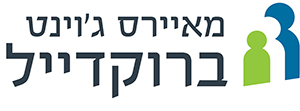כמה קשישים גרים בדימונה? כמה בני +65 עדיין משתייכים לכוח העבודה, וכמה זכאים לפנסייה? כמה מהקשישים גרים במוסדות ומה מאפיין אותם? לכמה מהקשישים יש מחשב אישי בבית, וכמה מהם מתחת לקו העוני?
בשנתון הסטטיסטי "קשישים בישראל" תמצאו תשובות לשאלות אלו, ולרבות אחרות. בשנתון מרוכז המידע הרלוונטי על אוכלוסיית הקשישים בישראל, כולל השוואה בין-לאומית.
זוהי השנה השישית שהשנתון יוצא לאור. מאז התפרסם לראשונה בשנת 1998, הוא נעשה לכלי רב-ערך בעבודתם של מתכננים, של מעצבי מדיניות, של אנשי אקדמיה ושל חוקרים ותלמידים.
כמו בקודמיו, מוצגים בשנתון הנוכחי, תוך התייחסות לחתכים דמוגרפיים וגאוגרפיים, נתונים על מאפייני אוכלוסיית הקשישים, על מאפייני בריאות שונים, כגון: תוחלת חיים, תמותה, מחלות, מוגבלות ודפוסי שימוש בשירותי בריאות נבחרים; על מאפיינים חברתיים-כלכליים, ובהם השכלה, תעסוקה ומצב כלכלי; ועל מערכת השירותים לקשישים, הכוללת שירותים קהילתיים ומוסדיים; עוד מוצגים בו נתונים על אוכלוסיית הקשישים, כולל השוואה למצב בעולם. בשנתון זה עודכנו הנתונים השוטפים, וכן נוספו נתונים בתחום הבריאות והורחבו הנתונים העוסקים במערכת השירותים. גם השנה הודגשו נתונים העוסקים במצבם הכלכלי של הקשישים, כולל לוחות העוסקים בהכנסותיהם ובהוצאותיהם של משקי בית של קשישים ונתונים היסטוריים על מספר הקשישים הזכאים לפנסייה; נוספו נתונים מתוך סקר ארצי שערך מאיירס ג'וינט-מכון ברוקדייל בנושא השפעת קשיים כלכליים על היבטים נבחרים בחיי הקשישים; וכן מופיעים השנה לוחות ראשונים מתוך הסקר החברתי שנערך על ידי הלמ"ס.
אנו מנסים במידת האפשר להציג את הנתונים, תוך התייחסות לפערים, הן בקרב קבוצות אוכלוסייה שונות, והן באזורים גאוגרפיים ותוך מתן מבט היסטורי. הנתונים מהווים תשתית מידע הכרחית לתכנון והם מספקים בסיס לדיון על הצרכים, על המענים ועל הפערים ביניהם בקרב קבוצות שונות באוכלוסייה.
הפקת השנתון התאפשרה הודות לשיתוף פעולה הדוק עם הלשכה המרכזית לסטטיסטיקה ועם המשרדים והארגונים העוסקים בטיפול בקשיש. אנו מקווים להמשיך ולעדכן את השנתון מדי שנה, להרחיבו ולהעמיקו. זאת, מתוך כוונה שהוא ימשיך לשרת את קובעי המדיניות, את מתכנני השירותים בארגונים השונים ואת כל העוסקים בלימוד ובמחקר, וגם יסייע להעלות את רמת השירותים המיועדים לזקנים ולשפר את איכות חייהם.
שנתון 2003 יוצא לאור על-ידי "משאב" – מאגר מידע ארצי לתכנון בתחום הזיקנה, המשותף למאיירס ג'וינט-מכון ברוקדייל ולאשל.
אזכור הפרסום בספרות האקדמית
Koren, C., & Lowenstein, A. (2008). Late-life widowhood and meaning in life. Ageing International, 32(2), 140.
Iecovich, E., Lankri, M., & Drori, D. (2005). Elder abuse and neglect–a pilot incidence study in Israel. Journal of Elder Abuse & Neglect, 16(3), 45-63.
Raveh, D., Gratch, L., Yinnon, A. M., & Sonnenblick, M. (2005). Demographic and clinical characteristics of patients admitted to medical departments. Journal of evaluation in clinical practice, 11(1), 33-44.
Koren, C., & Eisikovits, Z. (2011). Life beyond the planned script: accounts and secrecy of older persons living in second couplehood in old age in a society in transition. Journal of Social and Personal Relationships, 28(1), 44-63.
Peleg, R., Press, Y., Asher, M., Pugachev, T., Glicensztain, H., Lederman, M., & Biderman, A. (2008). An intervention program to reduce the number of hospitalizations of elderly patients in a primary care clinic. BMC health services research, 8(1), 36.
Segel-Karpas, D. (2015). Number of illnesses, self-perceived health, and depressive symptoms: the moderating role of employment in older adulthood and old age. Work, Aging and Retirement, 1(4), 382-392.
Billig, M. (2004). Supportive communities, an optimum arrangement for the older population. J. Soc. & Soc. Welfare, 31, 131.
Eilat-Tsanani, S., Tabenkin, H., Kaufman, B., Lavie, I., Weiss, Z., & Apelbaum, R. (2012). Rehabilitation of elderly patients in the community following surgery for hip fracture–utilization of personal and health care services. Disability and rehabilitation, 34(10), 811-816.
Doron, I. (2007). Heaven or hell? Aging behind bars in Israel. Hallym International Journal of Aging, 9(2), 145-159.
Iecovich, E., & Biderman, A. Y. A. (2013). Quality of life among disabled older adults without cognitive impairment and its relation to attendance in day care centres. Ageing & Society, 33(4), 627-643.
Moran, M. R., Werner, P., Doron, I., HaGani, N., Benvenisti, Y., King, A. C., … & Ergon, S. (2017). Exploring the Objective and Perceived Environmental Attributes of Older Adults’ Neighborhood Walking Routes: A Mixed Methods Analysis. Journal of aging and physical activity, 25(3), 420-431.
Lowenstein, A., & Katz, R. (2015). Intergenerational family relations in the multicultural society of Israel.
Brodsky, J., & Litwin, H. (2005). Immigration, appartenance ethnique et schémas de soins des personnes âgées en Israël. Retraite et société, (1), 175-201.
Ayalon, L. (2018). Family relations and elder care among Arabs in the North of Israel. Research on aging, 40(9), 839-858.
Litwin, H., Schwartz, E., & Avital, D. (2017). Religiosity and well-being among older Jewish Israelis: Findings from SHARE. Journal of religion, spirituality & aging, 29(2-3), 208-223.
Brodsky, J., & Litwin, H. (2005). Immigration, ethnicity and patterns of care among older persons in Israel. Retraite et Société, 44, 177-203.
Yan, E., & Fang, G. (2017). Elder abuse and neglect in Asia. In Elder Abuse (pp. 477-494). Springer, Cham.
Berner, Y. N. (2004). Healthy aging: the elderly's achievement.
Ayalon, L. (2018). Between older adults' needs and the law: The Israeli Long Term Care Insurance Law from the Perspectives of Service Users and Providers. Health & social care in the community, 26(4), e514-e522.
Brodsky, J. Healthy Aging Around the World: Israel Too?.
